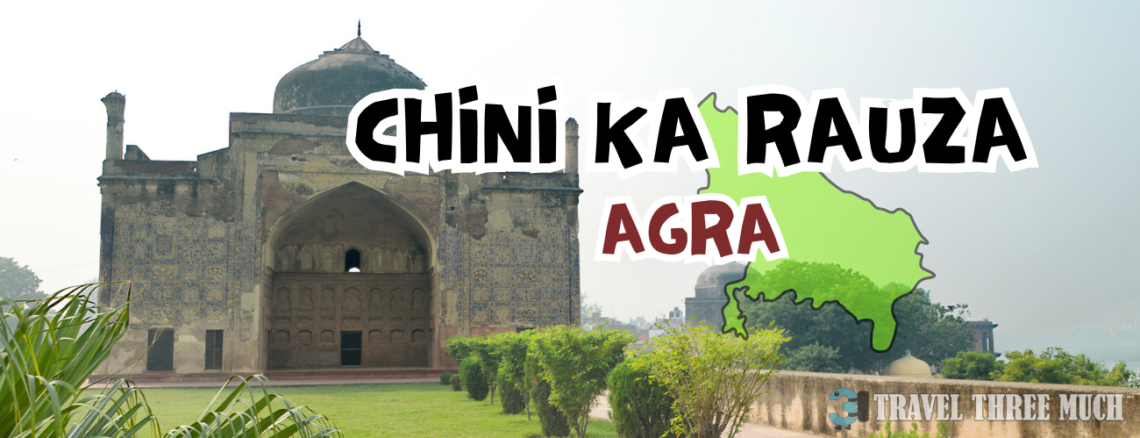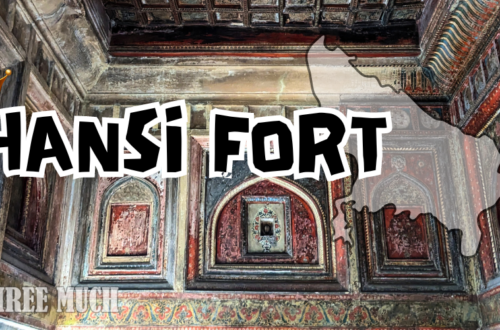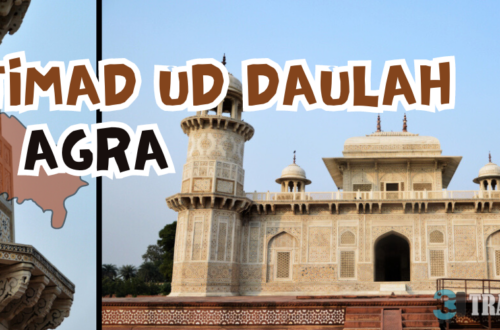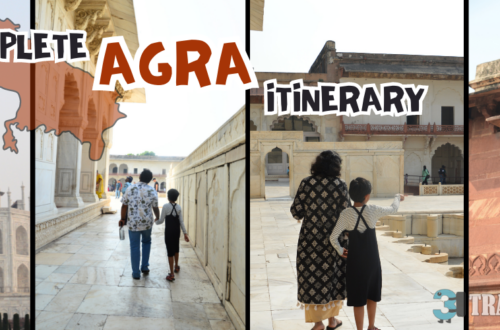
Chini Ka Rauza: A Blue-Tiled Marvel in Agra
We visited the Tomb of Shukrullah Shirazi, known as Chini Ka Rauza during our visit to Agra.
When we told the cab driver that we wanted to visit a place called “Chini ka Rauza”, he had no clue where it was. Other than few locals, nobody else seemed to frequent this place. We booked a cab from an aggregator and our cab driver was a local of Agra. When we told him our destination, he rolled off all the popular tourist haunts. And then asked us in a surprised tone why we wanted to go there.
He followed this up saying that he’s never visited the place in his lifetime! He said he’ll also accompany us to the tomb to see what it was all about.
The tomb had no entry fees and remains open from sunrise to sunset.
Read our complete Agra itinerary here.
History of Chini ka Rauza
Born in Iran, Shirazi assisted in administrative and diplomatic duties in the Safavid court, until his patron fell out of favour with the royal family due to suspected treason and/or cowardice in battle, and was executed. Shirazi then emigrated to India and was recommended to the emperor’s court by a noble, whom Shirazi served.
Shirazi was assigned a chief diplomatic position under the then-prince Shah Jahan by the Mughal Emperor Jahangir.

For his services to the prince, Shirazi had the title ‘Afzal Khan’ bestowed on him in 1615 CE by Jehangir and in 1616 CE. He was also made the deputy governor of Lahore province, split in present-day India and Pakistan. Afzal Khan rose to the position of ‘wazir’ or prime minister in Emperor Shah Jahan’s court(after the demise of Emperor Jahangir), thanks to his support of the prince in his succession after the power struggle that followed the emperor’s death.
Afzal Khan was educated in accounts-keeping, prose composition and calligraphy.
He proved to be an adept administrator and had a brother Amanat Khan. This brother who accompanied him to India became renowned for designing the calligraphic inscriptions on the Taj Mahal.
Afzal Khan passed away in Lahore aged 70 and is interred in Agra in a mausoleum that is locally better known as Chini ka Rauza.
It was interesting to see that Afzal Khan had built his mausoleum in his lifetime in preparation for his demise. The construction seems to have taken a period of 11 years (between 1628 CE-1639 CE).
Chini – Tilework
The term ‘Chini’ means Chinese in Hindi. It refers to the tilework that originally decorated the exterior.

Much of the tomb complex has been lost to the ravages of time and human conflict. All that remains is the main tomb and a single tower in the compound.
The facade of the main tomb is deceptively plain. Most of the tilework on this face have been completely lost.
Yet, just a short walk to the sides showed that even in its present dilapidated state, the remaining tilework mural is impressive.
The entire structure is stone masonry plastered over. The plasterwork has niches which have survived well to this day.
On the plastered base, thousands of small tiles in yellow, blue, green, orange and white have been embedded. These create immensely large murals which feature popular motifs of floral patterns and interwoven geometric patterns.


The Mausoleum
We almost missed the actual highlight of the monument. An old caretaker of the complex beckoned us into the mausoleum. I mentally braced for another set of sensationalist and false tales like those the self-proclaimed ‘guides’ of Fatehpur Sikhri.
However, the caretaker matter-of-factly told us two brothers were interred here, one of whom was the prime minister in Shah Jahan’s court and the other, a calligrapher.
He said that the cenotaphs we saw were not the actual graves and that the burial chambers are subterranean, but locked for visitors now.

He then pointed out the richly painted murals on the inner walls and roof. They still seemed to be in much better shape than the tilework of the exterior.
The caretaker was genuinely happy to see that he had visitors who were interested to learn the history behind the monument.


Outside the monument
We took in the views of the Yamuna river from the outer walls of the monument. There’s a structure named the Kala Gumbaz which was fenced off, but visible from the mausoleum compound.
The Kala Gumbaz is also reputedly built by Afzal Khan and is also called the Katra Wazir Khan.




We then spent a while strolling around the mausoleum. We took in the views of the remanants of the tilework and bid adieu to the mausoleum.
If you wish to catch a glimpse of how pretty the mausoleum must’ve looked in its heyday with the magnificent tilework intact, take a look at this watercolour painting from the University of Southampton Special Collections hosted here.





